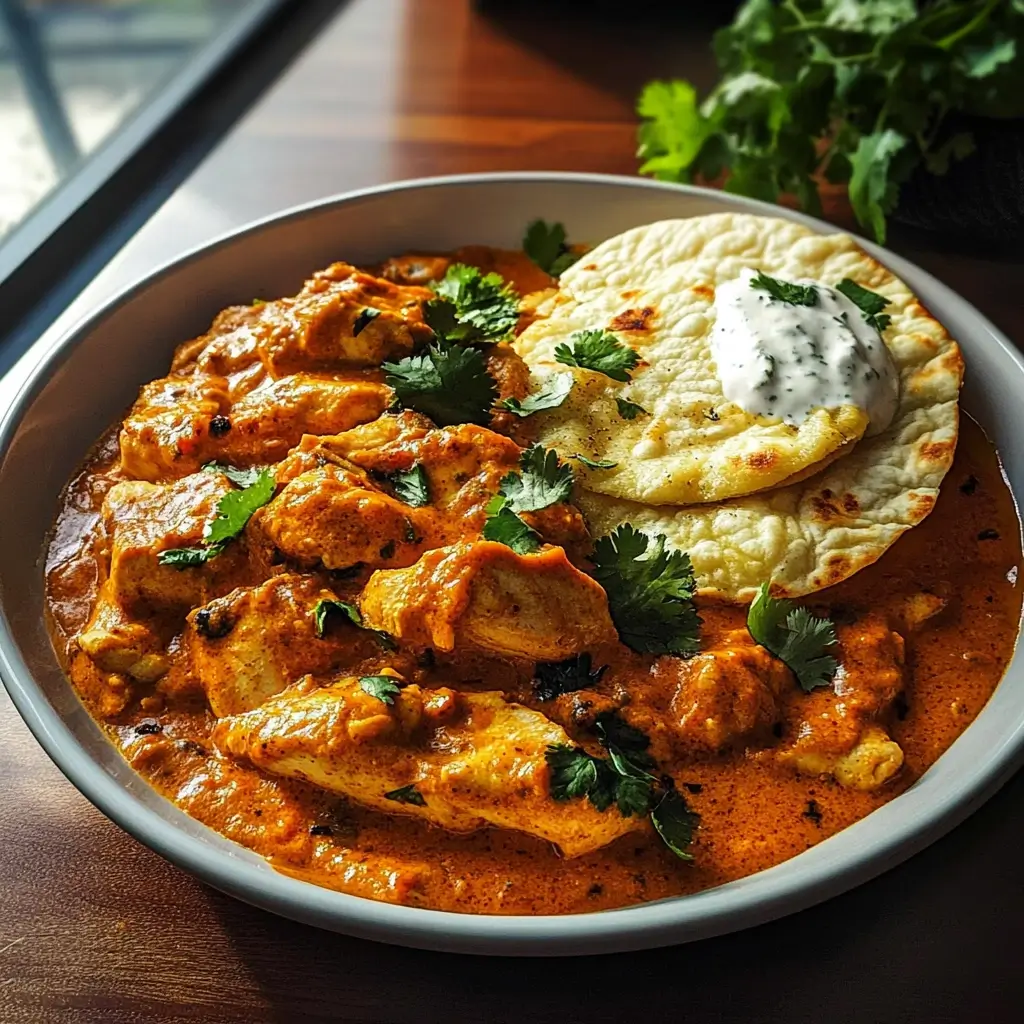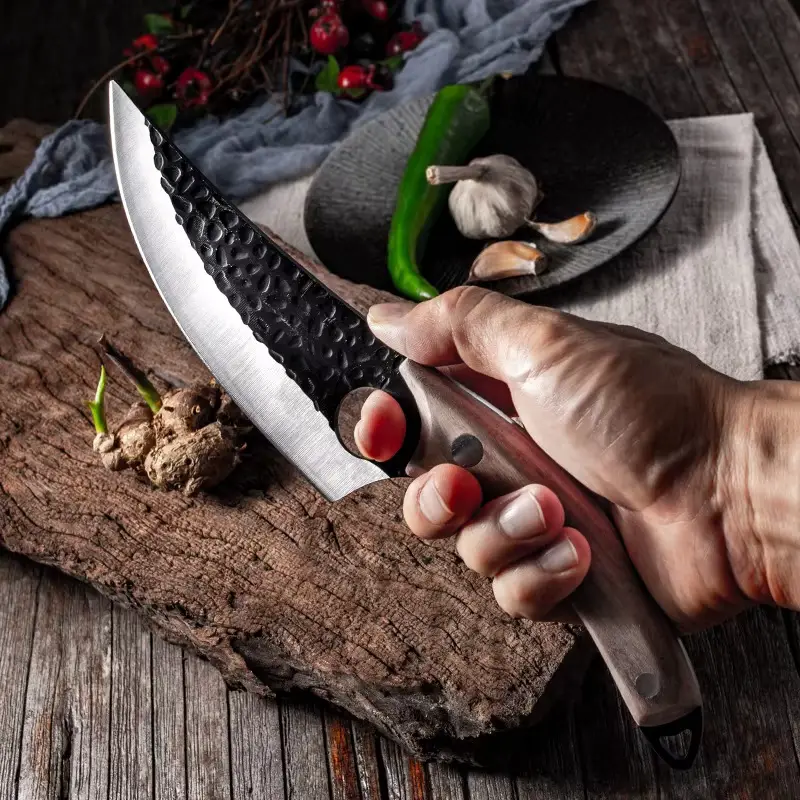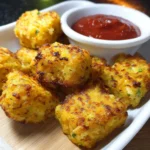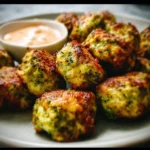Honestly, if I had a rupee for every time someone asked me for a Chicken Tikka Masala recipe, I’d be vacationing in the Himalayas right now. It’s a dish that transcends continents and cultures, a testament to the power of flavor and comfort food. But let’s be real, not all Tikka Masalas are created equal. Some are bland, some are too sweet, and some just lack that certain ‘zing’. This, my friends, is not one of those recipes. This Spicy Chicken Tikka Masala is the real deal. From the first tantalizing aroma that fills your kitchen to the last satisfying spoonful, it’s a culinary journey straight to the heart of India. My family? They devoured it. Plates were scraped clean, and requests for seconds echoed around the table. Even my spice-averse child, usually wary of anything remotely ‘hot’, admitted this was “actually really good!” That, in my book, is high praise. So, if you’re looking to recreate that authentic restaurant-quality Tikka Masala experience in your own home, and with a delightful spicy kick, then you’ve come to the right place. Get ready to embark on a flavorful adventure – your taste buds will thank you!
Ingredients for Spicy Chicken Tikka Masala
The magic of Chicken Tikka Masala lies in its carefully curated blend of spices and the interplay between the smoky, marinated chicken and the rich, creamy tomato-based gravy. To achieve that authentic, spicy, and utterly delicious flavor, you’ll need to gather the following ingredients. We’ll break it down into two key components: the marinade for the chicken and the masala sauce itself. Using fresh, high-quality spices will make a noticeable difference in the final dish, so invest in the best you can find.
For the Chicken Marinade:
- 1.5 lbs Boneless, Skinless Chicken Thighs or Breasts: Chicken thighs are often preferred for Tikka Masala as they tend to stay moist and tender even after grilling or pan-frying. However, chicken breasts work just as well if that’s your preference. Cut the chicken into 1-inch cubes for even cooking and optimal marinade absorption.
- 1 cup Plain Yogurt: Full-fat yogurt is recommended for its creamy texture and ability to tenderize the chicken. Greek yogurt can also be used, but you might need to thin it out slightly with a tablespoon or two of water to achieve the right consistency for coating the chicken.
- 2 Tablespoons Ginger-Garlic Paste: This is a cornerstone of Indian cooking and provides a pungent, aromatic base for the marinade. You can buy ready-made ginger-garlic paste or easily make your own by blending equal parts fresh ginger and garlic with a little water. Freshly made paste will always offer a more vibrant flavor.
- 2 Tablespoons Lemon Juice: The acidity of lemon juice helps to tenderize the chicken and brightens the flavors of the marinade. Freshly squeezed lemon juice is always best.
- 1 Tablespoon Garam Masala: This warm spice blend is essential for authentic Indian flavor. Garam masala typically includes cinnamon, cardamom, cloves, cumin, coriander, and black pepper. You can find pre-made garam masala in most grocery stores or create your own blend for a truly personalized touch.
- 1 Tablespoon Kashmiri Chili Powder: This is where the ‘spicy’ element comes in! Kashmiri chili powder is known for its vibrant red color and moderate heat level. It adds a beautiful hue and a pleasant warmth without being overwhelmingly spicy. If you prefer a milder dish, you can reduce the amount or use a milder chili powder like paprika. For extra heat, you can substitute with a hotter chili powder like cayenne pepper or add a pinch of red pepper flakes.
- 1 Tablespoon Turmeric Powder: Turmeric not only adds a beautiful golden color to the chicken but also boasts anti-inflammatory properties and a subtle earthy flavor.
- 1 Tablespoon Ground Cumin: Cumin adds a warm, earthy, and slightly bitter note that complements the other spices beautifully.
- 1 Tablespoon Ground Coriander: Coriander is a fragrant spice with citrusy and slightly sweet notes that balances the earthiness of cumin and turmeric.
- 1 teaspoon Salt: Adjust salt to taste, keeping in mind that the sauce will also be seasoned.
- 1/2 teaspoon Black Pepper: Freshly ground black pepper adds a touch of pungency and enhances the overall spice profile.
For the Spicy Tikka Masala Sauce:
- 2 Tablespoons Vegetable Oil or Ghee: Vegetable oil is a neutral option, while ghee (clarified butter) adds a rich, nutty flavor that is traditional in Indian cooking. You can also use a combination of both.
- 1 Large Onion, Finely Chopped: Onions form the base of the masala sauce, adding sweetness and depth of flavor as they caramelize. Finely chopping ensures they cook down evenly and create a smooth sauce.
- 2 Cloves Garlic, Minced: Garlic adds a pungent and aromatic layer to the sauce. Freshly minced garlic is always preferred over pre-minced garlic in a jar.
- 1 inch Ginger, Grated or Finely Minced: Fresh ginger provides a warm, spicy, and slightly citrusy note that complements the other flavors in the sauce.
- 1 Green Bell Pepper, Diced: Bell pepper adds a touch of sweetness and a slight crunch to the sauce. Green bell pepper is traditionally used, but you can also use red or yellow bell pepper for a sweeter flavor.
- 1 (28 oz) Can Crushed Tomatoes: Good quality crushed tomatoes form the base of the Tikka Masala sauce. Fire-roasted crushed tomatoes can add an extra layer of smoky flavor.
- 1 (14 oz) Can Diced Tomatoes: Diced tomatoes add texture to the sauce. You can drain some of the liquid from the can if you prefer a thicker sauce.
- 1 cup Heavy Cream: Heavy cream is what gives Tikka Masala its signature richness and creamy texture. For a slightly lighter version, you can use half-and-half, but the sauce will be less decadent. For a dairy-free option, full-fat coconut milk can be used, but it will slightly alter the flavor profile.
- 1/2 cup Water or Chicken Broth: Water or chicken broth is used to adjust the consistency of the sauce. Chicken broth will add a bit more depth of flavor.
- 1 Tablespoon Kasuri Methi (Dried Fenugreek Leaves): Kasuri Methi adds a unique, slightly bitter, and aromatic flavor that is characteristic of authentic Tikka Masala. Crush the dried leaves between your palms before adding them to release their aroma.
- 1 teaspoon Sugar: A touch of sugar balances the acidity of the tomatoes and enhances the overall flavor of the sauce.
- 1/2 teaspoon Salt: Adjust salt to taste.
- 1/4 teaspoon Red Pepper Flakes (Optional, for extra heat): If you want to amp up the spice level even further, add a pinch of red pepper flakes to the sauce.
- Fresh Cilantro, Chopped (for garnish): Fresh cilantro adds a bright, herbaceous finish and a pop of color.
Step-by-Step Instructions for Making Spicy Chicken Tikka Masala
Now that you have all your ingredients ready, let’s dive into the step-by-step process of creating this flavorful Spicy Chicken Tikka Masala. Follow these instructions carefully for best results, and don’t be afraid to embrace the aromas and enjoy the cooking process!
Step 1: Marinating the Chicken (Minimum 30 minutes, Ideally 2-4 hours, or Overnight for Maximum Flavor)
- Prepare the Marinade: In a large bowl, combine the yogurt, ginger-garlic paste, lemon juice, garam masala, Kashmiri chili powder, turmeric powder, ground cumin, ground coriander, salt, and black pepper. Whisk everything together until it forms a smooth and well-combined marinade.
- Marinate the Chicken: Add the cubed chicken to the marinade. Ensure that each piece of chicken is thoroughly coated in the marinade. Use your hands to gently massage the marinade into the chicken, ensuring it penetrates all sides.
- Refrigerate: Cover the bowl with plastic wrap or a lid and refrigerate for at least 30 minutes. For the best flavor and tender chicken, marinate for 2-4 hours, or even overnight in the refrigerator. The longer the chicken marinates, the more flavorful and tender it will become.
Step 2: Cooking the Chicken (Grilling, Baking, or Pan-Frying)
While the chicken is marinating, you can prepare for the next steps. Once the marinating time is complete, it’s time to cook the chicken. You have a few options here:
- Grilling (Recommended for Authentic Smoky Flavor): Preheat your grill to medium-high heat. Thread the marinated chicken onto skewers (if using wooden skewers, soak them in water for 30 minutes beforehand to prevent burning). Grill the chicken skewers for about 8-12 minutes, turning occasionally, until they are cooked through and have a slight char. The internal temperature of the chicken should reach 165°F (74°C).
- Baking (Convenient Oven Method): Preheat your oven to 400°F (200°C). Line a baking sheet with parchment paper or foil. Arrange the marinated chicken pieces in a single layer on the baking sheet. Bake for 20-25 minutes, or until the chicken is cooked through and slightly browned.
- Pan-Frying (Quick and Easy Stovetop Method): Heat 1 tablespoon of vegetable oil in a large skillet or pan over medium-high heat. Add the marinated chicken pieces in batches (don’t overcrowd the pan). Cook for about 5-7 minutes per side, or until the chicken is cooked through and nicely browned.
Once the chicken is cooked, set it aside and keep it warm while you prepare the masala sauce.
Step 3: Making the Spicy Tikka Masala Sauce
- Sauté Aromatics: Heat vegetable oil or ghee in a large pot or Dutch oven over medium heat. Add the finely chopped onion and sauté until golden brown and softened, about 5-7 minutes, stirring occasionally. This step is crucial for building the flavor base of the sauce.
- Add Ginger and Garlic: Add the minced garlic and grated ginger to the pot. Sauté for another minute until fragrant, stirring constantly to prevent burning.
- Incorporate Bell Pepper: Add the diced green bell pepper to the pot and sauté for 3-4 minutes until it softens slightly.
- Add Tomatoes and Spices: Pour in the crushed tomatoes and diced tomatoes. Stir well to combine. Add the garam masala, Kashmiri chili powder (or your preferred chili powder), turmeric powder, ground cumin, ground coriander, sugar, salt, and red pepper flakes (if using). Stir everything together and bring the sauce to a simmer.
- Simmer and Thicken: Reduce the heat to low, cover the pot, and simmer for 15-20 minutes, stirring occasionally. This allows the flavors to meld together and the sauce to thicken slightly.
- Blend for Smoothness (Optional): For a smoother sauce, you can use an immersion blender to blend the sauce directly in the pot. Alternatively, carefully transfer the sauce in batches to a regular blender and blend until smooth. Return the blended sauce to the pot. This step is optional, but it creates a more restaurant-style smooth Tikka Masala sauce.
- Add Cream and Kasuri Methi: Stir in the heavy cream and crushed Kasuri Methi. Simmer for another 5-7 minutes, allowing the cream to incorporate and the sauce to thicken further. Taste and adjust seasoning (salt, sugar, spice) as needed.
Step 4: Combine Chicken and Sauce & Final Simmer
- Add Cooked Chicken: Gently add the cooked chicken pieces (grilled, baked, or pan-fried) to the masala sauce. Stir to coat the chicken evenly with the sauce.
- Simmer Together: Simmer for another 5-10 minutes, allowing the chicken to absorb the flavors of the sauce and for the sauce to further thicken.
- Garnish and Serve: Remove from heat and garnish generously with fresh chopped cilantro. Serve hot with your choice of accompaniments.
Nutritional Information for Spicy Chicken Tikka Masala
Understanding the nutritional content of your meals can be helpful for making informed dietary choices. Please note that the following nutritional information is an estimate and can vary depending on specific ingredient brands, portion sizes, and cooking methods.
Serving Size: Approximately 1.5 cups (350g)
Approximate Calories per Serving: 450-550 calories
Approximate Macronutrient Breakdown (per serving):
- Protein: 40-45 grams
- Fat: 25-35 grams
- Carbohydrates: 20-25 grams
Key Nutritional Highlights (per serving):
- High in Protein: Chicken Tikka Masala is a good source of lean protein, which is essential for muscle building and satiety.
- Moderate in Fat: The fat content comes primarily from the heavy cream and oil/ghee used in the recipe. While some fat is necessary for flavor and satiety, be mindful of portion sizes if you are watching your fat intake.
- Source of Vitamins and Minerals: The dish contains vitamins and minerals from the chicken, tomatoes, onions, bell peppers, and spices. Turmeric, in particular, is known for its antioxidant and anti-inflammatory properties.
- Sodium Content: The sodium content can vary depending on the amount of salt added and the sodium content of canned tomatoes and other ingredients. Be mindful of sodium if you are on a low-sodium diet.
Important Considerations:
- Calorie Density: Chicken Tikka Masala is a relatively calorie-dense dish due to the cream and oil/ghee. Portion control is key if you are managing your weight.
- Spice Level: The spiciness can be adjusted to your preference by controlling the amount of chili powder and red pepper flakes.
- Customization: You can make healthier variations by using low-fat yogurt, reducing the amount of heavy cream or substituting with a lighter alternative like evaporated milk or cashew cream (for a dairy-free option), and using less oil/ghee.
Disclaimer: This nutritional information is an estimate and for general guidance only. For precise nutritional information, it is recommended to use a nutrition calculator with the specific brands and quantities of ingredients you use.
Preparation Time for Spicy Chicken Tikka Masala
Planning your cooking time is essential for a smooth and enjoyable culinary experience. Here’s a breakdown of the preparation time for Spicy Chicken Tikka Masala:
- Prep Time (Chopping, Measuring, Marinade Preparation): 30-40 minutes
- This includes chopping onions, bell peppers, garlic, ginger, measuring out spices, preparing the ginger-garlic paste (if making from scratch), and mixing the marinade.
- Marinating Time: Minimum 30 minutes, ideally 2-4 hours, or overnight.
- This is passive time, where the chicken sits in the marinade in the refrigerator. You can use this time to prepare other side dishes or relax.
- Cooking Time (Chicken): 8-25 minutes (depending on cooking method – grilling, baking, or pan-frying)
- Grilling is typically the quickest, followed by pan-frying, and then baking.
- Cooking Time (Masala Sauce): 30-40 minutes
- This includes sautéing aromatics, simmering the sauce, and blending (optional).
- Simmering Chicken and Sauce Together: 5-10 minutes
Total Active Cooking Time: Approximately 1 hour 15 minutes – 1 hour 35 minutes (excluding marinating time)
Total Time (Including Marinating – Minimum): Approximately 1 hour 45 minutes – 2 hours 5 minutes
Tips to Optimize Preparation Time:
- Prep Ahead: Chop onions, garlic, ginger, and bell peppers in advance. You can even make the ginger-garlic paste and store it in the refrigerator for a day or two.
- Marinate Chicken Overnight: Marinating the chicken overnight not only enhances flavor but also spreads out the preparation time. You can prepare the marinade and chicken the day before you plan to cook.
- Use Pre-Made Ginger-Garlic Paste: Using store-bought ginger-garlic paste can save you a few minutes of prep time.
- Read the Recipe Thoroughly: Familiarize yourself with all the steps before you start cooking. This will help you work efficiently and avoid any last-minute scrambling.
- Multi-task: While the chicken is marinating or the sauce is simmering, you can prepare side dishes like rice or naan bread.
How to Serve Spicy Chicken Tikka Masala
Spicy Chicken Tikka Masala is a versatile dish that pairs wonderfully with a variety of accompaniments. To create a complete and satisfying Indian meal, consider serving it with the following:
- Rice:
- Basmati Rice: The classic choice! Basmati rice, with its long grains and fragrant aroma, is the perfect canvas for soaking up the rich Tikka Masala gravy.
- Jeera Rice (Cumin Rice): Adding a touch of cumin to basmati rice enhances its flavor and complements the spices in the Tikka Masala.
- Plain White Rice: Simple and versatile, plain white rice is always a good option.
- Brown Rice: For a healthier option, brown rice offers a nutty flavor and more fiber.
- Indian Breads:
- Naan: Soft, pillowy naan bread is ideal for scooping up the creamy Tikka Masala sauce. Garlic naan or butter naan are particularly delicious choices.
- Roti: Whole wheat roti is a healthier and more rustic option. It’s thinner than naan and perfect for wrapping around pieces of chicken and sauce.
- Paratha: Flaky and layered paratha bread adds another dimension of texture and flavor.
- Sides & Condiments:
- Raita: Cooling raita, made with yogurt, cucumber, and spices, provides a refreshing contrast to the spicy Tikka Masala.
- Salad: A simple salad with lettuce, tomatoes, cucumbers, and a light vinaigrette can add freshness and balance to the meal.
- Indian Pickles (Achar): Tangy and spicy Indian pickles add a burst of flavor and heat. Mango pickle, lime pickle, or mixed vegetable pickle are all great choices.
- Papadum: Crispy lentil wafers (papadum) provide a satisfying crunch and can be served as an appetizer or alongside the main course.
- Onion Salad (Sirka Pyaz): Thinly sliced onions marinated in vinegar and spices offer a tangy and refreshing bite.
- Drinks:
- Lassi: Cooling yogurt-based drinks like mango lassi or sweet lassi are traditional Indian beverages that pair well with spicy food.
- Masala Chai: A warm and aromatic cup of masala chai (spiced Indian tea) can be a comforting accompaniment or a perfect end to the meal.
- Water or Sparkling Water: Simple and refreshing choices to cleanse the palate.
Serving Suggestions for a Complete Meal:
For a satisfying and balanced Indian feast, consider serving Spicy Chicken Tikka Masala with:
- Basmati rice or Jeera Rice
- Garlic Naan or Roti
- Cucumber Raita
- Mango Pickle
- Side Salad
Expert Tips for the Best Spicy Chicken Tikka Masala
To truly elevate your Spicy Chicken Tikka Masala and make it taste like it came straight from a top-notch Indian restaurant, keep these expert tips in mind:
- Marinate the Chicken Adequately: Don’t skimp on the marinating time! At least 2 hours, and preferably 4 hours or overnight, is crucial for tenderizing the chicken and infusing it with flavor. The yogurt tenderizes the chicken, while the spices penetrate deeply.
- Bloom Your Spices: To maximize the flavor of your spices, ‘bloom’ them in hot oil or ghee at the beginning of making the sauce. Sautéing the ground spices for a minute or two in hot fat releases their aromatic oils and intensifies their flavor. Be careful not to burn them.
- Caramelize the Onions Properly: Patience is key when sautéing onions. Cook them over medium heat until they are deeply golden brown and caramelized. This process takes time, but it builds a rich, sweet base for the sauce. Don’t rush this step!
- Use Fresh, High-Quality Ingredients: Whenever possible, use fresh ginger, garlic, and spices. Freshly ground spices will have a more potent and vibrant flavor compared to older, pre-ground spices. Good quality canned tomatoes will also make a difference in the sauce.
- Adjust Spice Level to Your Preference: This recipe is designed to be spicy, but you can easily adjust the heat level. Reduce the amount of Kashmiri chili powder or red pepper flakes for a milder dish. For extra heat, add more chili powder or a pinch of cayenne pepper. Taste as you go and adjust accordingly.
Frequently Asked Questions About Spicy Chicken Tikka Masala
Got questions about making Spicy Chicken Tikka Masala? You’re not alone! Here are answers to some frequently asked questions to help you perfect your dish:
Q1: Can I make Chicken Tikka Masala less spicy?
A: Absolutely! The spice level in this recipe is easily adjustable. To make it less spicy, reduce or eliminate the Kashmiri chili powder and red pepper flakes. You can also use a milder chili powder like paprika for color without much heat. Start with less spice and taste as you go, adding more if needed. Remember, you can always add more spice later, but it’s harder to remove it.
Q2: Can I use chicken breasts instead of chicken thighs?
A: Yes, you can definitely use chicken breasts. However, chicken thighs are generally preferred for Tikka Masala as they tend to be more forgiving and stay moist and tender even when cooked at higher temperatures. Chicken breasts can sometimes dry out if overcooked. If using chicken breasts, be sure not to overcook them and consider cutting them into slightly larger cubes to help retain moisture.
Q3: Can I make Chicken Tikka Masala ahead of time?
A: Yes, Chicken Tikka Masala is a great dish to make ahead of time! In fact, the flavors often deepen and improve after a day or two in the refrigerator. You can prepare the entire dish, including the chicken and sauce, and store it in an airtight container in the refrigerator for up to 3-4 days. Reheat gently over medium heat on the stovetop or in the microwave until heated through.
Q4: Can I freeze Chicken Tikka Masala?
A: Yes, Chicken Tikka Masala freezes well. Allow the dish to cool completely before transferring it to freezer-safe containers or freezer bags. Freeze for up to 2-3 months. To thaw, defrost in the refrigerator overnight or use the defrost setting on your microwave. Reheat thoroughly on the stovetop or in the microwave until heated through. The texture of the sauce may change slightly after freezing and thawing, but the flavor will remain delicious.
Q5: Can I make a vegetarian version of Tikka Masala?
A: Yes! You can easily adapt this recipe to make a delicious vegetarian Tikka Masala. Instead of chicken, you can use paneer (Indian cheese), tofu, chickpeas, or vegetables like cauliflower, potatoes, or mixed vegetables. Paneer is a popular and excellent substitute that holds its shape well and absorbs the flavors of the sauce beautifully. Tofu should be pressed to remove excess water before marinating and cooking. Chickpeas and vegetables can be added directly to the sauce without marinating. Adjust cooking times as needed depending on the vegetarian protein you choose.
Print
Spicy Chicken Tikka Masala
Ingredients
The magic of Chicken Tikka Masala lies in its carefully curated blend of spices and the interplay between the smoky, marinated chicken and the rich, creamy tomato-based gravy. To achieve that authentic, spicy, and utterly delicious flavor, you’ll need to gather the following ingredients. We’ll break it down into two key components: the marinade for the chicken and the masala sauce itself. Using fresh, high-quality spices will make a noticeable difference in the final dish, so invest in the best you can find.
For the Chicken Marinade:
- 1.5 lbs Boneless, Skinless Chicken Thighs or Breasts: Chicken thighs are often preferred for Tikka Masala as they tend to stay moist and tender even after grilling or pan-frying. However, chicken breasts work just as well if that’s your preference. Cut the chicken into 1-inch cubes for even cooking and optimal marinade absorption.
- 1 cup Plain Yogurt: Full-fat yogurt is recommended for its creamy texture and ability to tenderize the chicken. Greek yogurt can also be used, but you might need to thin it out slightly with a tablespoon or two of water to achieve the right consistency for coating the chicken.
- 2 Tablespoons Ginger-Garlic Paste: This is a cornerstone of Indian cooking and provides a pungent, aromatic base for the marinade. You can buy ready-made ginger-garlic paste or easily make your own by blending equal parts fresh ginger and garlic with a little water. Freshly made paste will always offer a more vibrant flavor.
- 2 Tablespoons Lemon Juice: The acidity of lemon juice helps to tenderize the chicken and brightens the flavors of the marinade. Freshly squeezed lemon juice is always best.
- 1 Tablespoon Garam Masala: This warm spice blend is essential for authentic Indian flavor. Garam masala typically includes cinnamon, cardamom, cloves, cumin, coriander, and black pepper. You can find pre-made garam masala in most grocery stores or create your own blend for a truly personalized touch.
- 1 Tablespoon Kashmiri Chili Powder: This is where the ‘spicy’ element comes in! Kashmiri chili powder is known for its vibrant red color and moderate heat level. It adds a beautiful hue and a pleasant warmth without being overwhelmingly spicy. If you prefer a milder dish, you can reduce the amount or use a milder chili powder like paprika. For extra heat, you can substitute with a hotter chili powder like cayenne pepper or add a pinch of red pepper flakes.
- 1 Tablespoon Turmeric Powder: Turmeric not only adds a beautiful golden color to the chicken but also boasts anti-inflammatory properties and a subtle earthy flavor.
- 1 Tablespoon Ground Cumin: Cumin adds a warm, earthy, and slightly bitter note that complements the other spices beautifully.
- 1 Tablespoon Ground Coriander: Coriander is a fragrant spice with citrusy and slightly sweet notes that balances the earthiness of cumin and turmeric.
- 1 teaspoon Salt: Adjust salt to taste, keeping in mind that the sauce will also be seasoned.
- 1/2 teaspoon Black Pepper: Freshly ground black pepper adds a touch of pungency and enhances the overall spice profile.
For the Spicy Tikka Masala Sauce:
- 2 Tablespoons Vegetable Oil or Ghee: Vegetable oil is a neutral option, while ghee (clarified butter) adds a rich, nutty flavor that is traditional in Indian cooking. You can also use a combination of both.
- 1 Large Onion, Finely Chopped: Onions form the base of the masala sauce, adding sweetness and depth of flavor as they caramelize. Finely chopping ensures they cook down evenly and create a smooth sauce.
- 2 Cloves Garlic, Minced: Garlic adds a pungent and aromatic layer to the sauce. Freshly minced garlic is always preferred over pre-minced garlic in a jar.
- 1 inch Ginger, Grated or Finely Minced: Fresh ginger provides a warm, spicy, and slightly citrusy note that complements the other flavors in the sauce.
- 1 Green Bell Pepper, Diced: Bell pepper adds a touch of sweetness and a slight crunch to the sauce. Green bell pepper is traditionally used, but you can also use red or yellow bell pepper for a sweeter flavor.
- 1 (28 oz) Can Crushed Tomatoes: Good quality crushed tomatoes form the base of the Tikka Masala sauce. Fire-roasted crushed tomatoes can add an extra layer of smoky flavor.
- 1 (14 oz) Can Diced Tomatoes: Diced tomatoes add texture to the sauce. You can drain some of the liquid from the can if you prefer a thicker sauce.
- 1 cup Heavy Cream: Heavy cream is what gives Tikka Masala its signature richness and creamy texture. For a slightly lighter version, you can use half-and-half, but the sauce will be less decadent. For a dairy-free option, full-fat coconut milk can be used, but it will slightly alter the flavor profile.
- 1/2 cup Water or Chicken Broth: Water or chicken broth is used to adjust the consistency of the sauce. Chicken broth will add a bit more depth of flavor.
- 1 Tablespoon Kasuri Methi (Dried Fenugreek Leaves): Kasuri Methi adds a unique, slightly bitter, and aromatic flavor that is characteristic of authentic Tikka Masala. Crush the dried leaves between your palms before adding them to release their aroma.
- 1 teaspoon Sugar: A touch of sugar balances the acidity of the tomatoes and enhances the overall flavor of the sauce.
- 1/2 teaspoon Salt: Adjust salt to taste.
- 1/4 teaspoon Red Pepper Flakes (Optional, for extra heat): If you want to amp up the spice level even further, add a pinch of red pepper flakes to the sauce.
- Fresh Cilantro, Chopped (for garnish): Fresh cilantro adds a bright, herbaceous finish and a pop of color.
Instructions
Now that you have all your ingredients ready, let’s dive into the step-by-step process of creating this flavorful Spicy Chicken Tikka Masala. Follow these instructions carefully for best results, and don’t be afraid to embrace the aromas and enjoy the cooking process!
Step 1: Marinating the Chicken (Minimum 30 minutes, Ideally 2-4 hours, or Overnight for Maximum Flavor)
- Prepare the Marinade: In a large bowl, combine the yogurt, ginger-garlic paste, lemon juice, garam masala, Kashmiri chili powder, turmeric powder, ground cumin, ground coriander, salt, and black pepper. Whisk everything together until it forms a smooth and well-combined marinade.
- Marinate the Chicken: Add the cubed chicken to the marinade. Ensure that each piece of chicken is thoroughly coated in the marinade. Use your hands to gently massage the marinade into the chicken, ensuring it penetrates all sides.
- Refrigerate: Cover the bowl with plastic wrap or a lid and refrigerate for at least 30 minutes. For the best flavor and tender chicken, marinate for 2-4 hours, or even overnight in the refrigerator. The longer the chicken marinates, the more flavorful and tender it will become.
Step 2: Cooking the Chicken (Grilling, Baking, or Pan-Frying)
While the chicken is marinating, you can prepare for the next steps. Once the marinating time is complete, it’s time to cook the chicken. You have a few options here:
- Grilling (Recommended for Authentic Smoky Flavor): Preheat your grill to medium-high heat. Thread the marinated chicken onto skewers (if using wooden skewers, soak them in water for 30 minutes beforehand to prevent burning). Grill the chicken skewers for about 8-12 minutes, turning occasionally, until they are cooked through and have a slight char. The internal temperature of the chicken should reach 165°F (74°C).
- Baking (Convenient Oven Method): Preheat your oven to 400°F (200°C). Line a baking sheet with parchment paper or foil. Arrange the marinated chicken pieces in a single layer on the baking sheet. Bake for 20-25 minutes, or until the chicken is cooked through and slightly browned.
- Pan-Frying (Quick and Easy Stovetop Method): Heat 1 tablespoon of vegetable oil in a large skillet or pan over medium-high heat. Add the marinated chicken pieces in batches (don’t overcrowd the pan). Cook for about 5-7 minutes per side, or until the chicken is cooked through and nicely browned.
Once the chicken is cooked, set it aside and keep it warm while you prepare the masala sauce.
Step 3: Making the Spicy Tikka Masala Sauce
- Sauté Aromatics: Heat vegetable oil or ghee in a large pot or Dutch oven over medium heat. Add the finely chopped onion and sauté until golden brown and softened, about 5-7 minutes, stirring occasionally. This step is crucial for building the flavor base of the sauce.
- Add Ginger and Garlic: Add the minced garlic and grated ginger to the pot. Sauté for another minute until fragrant, stirring constantly to prevent burning.
- Incorporate Bell Pepper: Add the diced green bell pepper to the pot and sauté for 3-4 minutes until it softens slightly.
- Add Tomatoes and Spices: Pour in the crushed tomatoes and diced tomatoes. Stir well to combine. Add the garam masala, Kashmiri chili powder (or your preferred chili powder), turmeric powder, ground cumin, ground coriander, sugar, salt, and red pepper flakes (if using). Stir everything together and bring the sauce to a simmer.
- Simmer and Thicken: Reduce the heat to low, cover the pot, and simmer for 15-20 minutes, stirring occasionally. This allows the flavors to meld together and the sauce to thicken slightly.
- Blend for Smoothness (Optional): For a smoother sauce, you can use an immersion blender to blend the sauce directly in the pot. Alternatively, carefully transfer the sauce in batches to a regular blender and blend until smooth. Return the blended sauce to the pot. This step is optional, but it creates a more restaurant-style smooth Tikka Masala sauce.
- Add Cream and Kasuri Methi: Stir in the heavy cream and crushed Kasuri Methi. Simmer for another 5-7 minutes, allowing the cream to incorporate and the sauce to thicken further. Taste and adjust seasoning (salt, sugar, spice) as needed.
Step 4: Combine Chicken and Sauce & Final Simmer
- Add Cooked Chicken: Gently add the cooked chicken pieces (grilled, baked, or pan-fried) to the masala sauce. Stir to coat the chicken evenly with the sauce.
- Simmer Together: Simmer for another 5-10 minutes, allowing the chicken to absorb the flavors of the sauce and for the sauce to further thicken.
- Garnish and Serve: Remove from heat and garnish generously with fresh chopped cilantro. Serve hot with your choice of accompaniments.
Nutrition
- Serving Size: one normal portion
- Calories: 550
- Fat: 35
- Carbohydrates: 25
- Protein: 45






